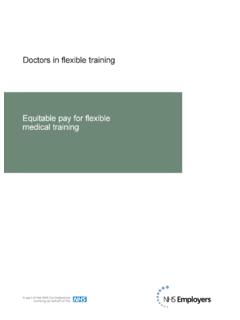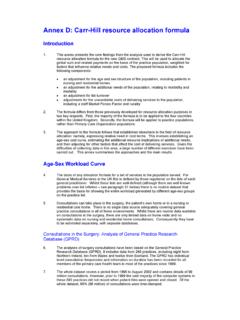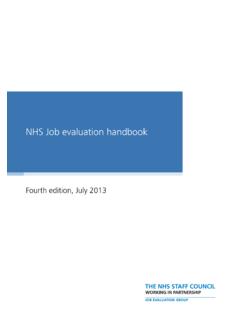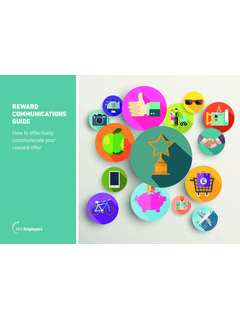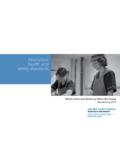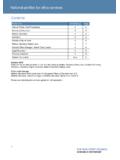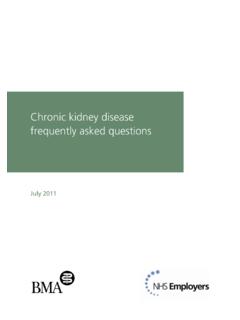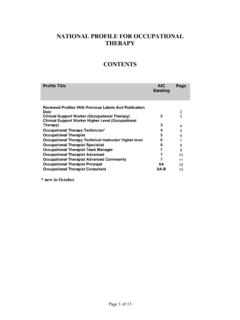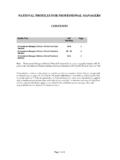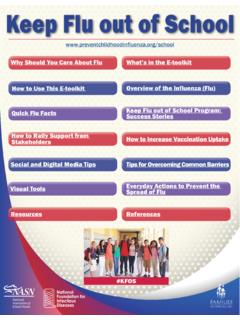Transcription of Communications toolkit A flu fighter guide - NHS …
1 Communications toolkitA flu fighter guideNational NHS staff seasonal flu vaccination campaign 2014/15A leading workforce campaign delivered by NHS Employers 2014We know that teams commit valuable time and resource to their flu fighter campaigns, promoting the reasons to have the vaccine and making sure that it is made available to as many staff as possible to increase uptake and protect patients. This guide has been written to provide you with ideas, information and tools to help raise awareness of your local flu fighter campaign and the flu vaccination. There are also other guides available, which can be used in conjunction with your Communications plan. These are free and available to download from our website have put together some tools and information to help you deliver your Communications strategy. Just pick and mix what works best for you and your organisation.
2 Here is a summary of what is in the rest of this toolkit :llPlanning your Communications - a step-by-step guide to what you need to think messages and facts to provide an understanding of how flu affects not only staff but also patients, colleagues and - to dispel common myths around flu and flu vaccination. llUseful information sources of information for you to refer to when comparing your sickness absence press releases to raise the profile of your campaign via local media articles for internal and external websites to help spread the fighter awards - to celebrate the hard work that has gone into your media - ideas on how to connect and engage with staff in a more immediate and direct and photography - a range of materials to help you raise the profile of your local flu fighter - to back up your evidence and statistics and for further details for the flu fighter team we re here to support you, so please contact us if you need any help.
3 Communications toolkitStep one: Set out your objective and which groups to targetWhether this is your first year or third year of delivering a flu fighter campaign , it is always important to spend time outlining what you want to achieve. This could be anything from mythbusting with areas that have low uptake, to promoting peer vaccinators and clinic times. When planning your campaign , look at where Communications can help to fulfil your objectives. Step two: Identify and enlist support from other teams within your organisation It s a good idea to consider who within your organisation could support your flu fighter team. Involving your Communications team, for example, could help promote and deliver your local campaign . This will not only help to give a wider understanding of the key aims of the campaign , but can also provide support and experience from other departments.
4 Step three: Select channel(s) that are accessible and preferred by your audience Look at what communication channels are available. These could include the use of the intranet, staff bulletins or newsletters, letters/emails from a senior member of staff or social media platforms such as twitter, Facebook, YouTube or Instagram. The key is to tailor your Communications to the needs of your organisation to ensure that they gain maximum visibility. Here are some things to think about when picking your communication channels:llDoes your workforce regularly check emails? llWould sending a letter be a better way of communicating? Could you get the chief executive or medical director to write to all staff?llDoes your workforce have access to the intranet on a regular basis? Could you build dedicated intranet pages with mythbusters or information about flu and the vaccination?
5 LlAre your staff based in one or many sites? Would posters and payslip leaflets be a good way of making the campaign more visible?llDoes your organisation have a staff newsletter or bulletin? Does this have wide coverage across the workforce?llWhat is your organisation s policy on the use of social media? Could you use twitter, Pinterest or LinkedIn to communicate with them? llHow will staff communicate with the flu fighter team is there sufficient resource to run a dedicated flu fighter inbox or phone line to deal with questions or requests throughout the flu season?Planning your communicationsStep four: Decide when you want to send your Communications out and how frequently Example Communications planObjectiveAudienceCommunication channelWhen and frequencyIncrease awareness of vaccination clinicsAll staffComputer pop-ups giving details of clinic timesDaily during flu seasonMythbusting information on flu and the vaccinationAll staffInternal email bulletinCanteen drop-in sessionsWeekly during the flu seasonEvery fortnight during seasonStep five: Build evaluation into the planDon t forget to add in time for evaluating your Communications plan.
6 It is best to do this as you go along to see if it s helping to fulfil your objectives and to adjust it if not. Once you are at the end of your campaign , look at how the Communications planning went overall. Read our guide for further help on this: reviewing your help support your Communications strategy, it is important to put together some key messages for your audience. These should be pieces of information that help you work towards achieving your objectives. Here are some messages that you may want to use or adapt for your to staffMore NHS frontline staff than ever before were protected against seasonal influenza in 2013/14. Flu fighter has helped staff vaccination rates climb from per cent in 2012/13 to per cent. This translates to a total of 534,090 frontline healthcare workers protected against flu in 2013/14. The aim of the campaign is to help this figure continue to rise.
7 All staff who are involved in direct patient care are eligible for a free flu vaccination from their employer. This includes students, trainees and volunteers working in NHS trusts. The Green Book guidance states: (Staff involved in direct patient care) includes staff who have regular clinical contact with patients and who are directly involved in patient care. This includes doctors, dentists, midwives and nurses, paramedics and ambulance drivers, occupational therapists, physiotherapists and radiographers. Students and trainees in these disciplines and volunteers who are working with patients must also be included. Patient careThe NHS already faces challenges around maintaining its workforce during times of increased sickness, so it is vital to reduce the impact of flu to protect patient care. The elderly, the very young and people with underlying medical conditions are at a greater risk of suffering severe illness.
8 However, even previously healthy people can develop severe complications from a mild flu season in 2013/14, our hospitals treated more than 904 patients in intensive care settings and, tragically, per cent of them number of flu-related admissions into intensive care or high dependency units in the UK increased in 2013/14 compared to the previous evidence has shown that healthcare workers are more likely to be exposed to the influenza virus than the general population. It has been estimated that up to one in four healthcare workers may become infected with influenza, even in a mild flu vaccinations can help the NHS achieve its goal to find 20 billion in efficiency savings by reducing the cost of sickness absence. In February 2011, the Audit Commission reported that the estimated direct cost of sickness absence was billion to NHS trusts and foundation trusts and 330 million to primary care trusts4, before adding the cost of replacing them with bank or temporary agency Boorman Review estimated that 555 million could be saved if NHS staff absence rates were reduced by a third through improvements to health and Key messagesMythbustingTo help dispel some of the common myths around flu and the flu vaccination, we have put together some key facts for you to killsFor the majority of people who catch it, flu is unpleasant but not life threatening.
9 However, for some it can lead to chest infections, severe complications and even death. Globally, seasonal flu accounts for about three to five million causes of severe illness per year and between 250,000 and 500,000 Influenza is a highly transmissible infection. The patient population found in hospital is much more vulnerable to the severe effects of workers may transmit the illness to patients even if they are mildly or sub-clinically infected. There are reports of influenza outbreaks within hospitals and other care settings where transmission from healthcare workers to patients is likely to have caused spread of the disease. 8 9 10 In one outbreak, 118 staff and 49 patients were A second resulted in six infections among neonates and one flu vaccine is safe The risk of having a serious (anaphylactic) reaction to the seasonal flu vaccine is less than one in a million: much lower than the risk of getting seriously ill from having the flu itself.
10 If you have had a serious allergic reaction (anaphylaxis) to a flu vaccine before, please talk to a clinician before getting vaccinated. If you have a serious allergic reaction (anaphylaxis) to hens eggs, you should enquire about vaccines with a very low egg content and be vaccinated under clinical supervision. The vaccine is one of the safest in the world seasonal flu vaccine is given to millions of people in the UK each year. The specific strains of flu that are included may change from one year to the next but vaccines are still thoroughly tested and are safe. The flu jab can t give you the fluIt is impossible to get flu from the having the flu jab because the vaccine doesn t contain live viruses. A very small number of people experience side effects such as aching muscles, but this is simply their immune system responding to the vaccine. The side effects of the vaccination are manageableFor the most part, seasonal flu vaccine side effects are mild or often non-existent.
